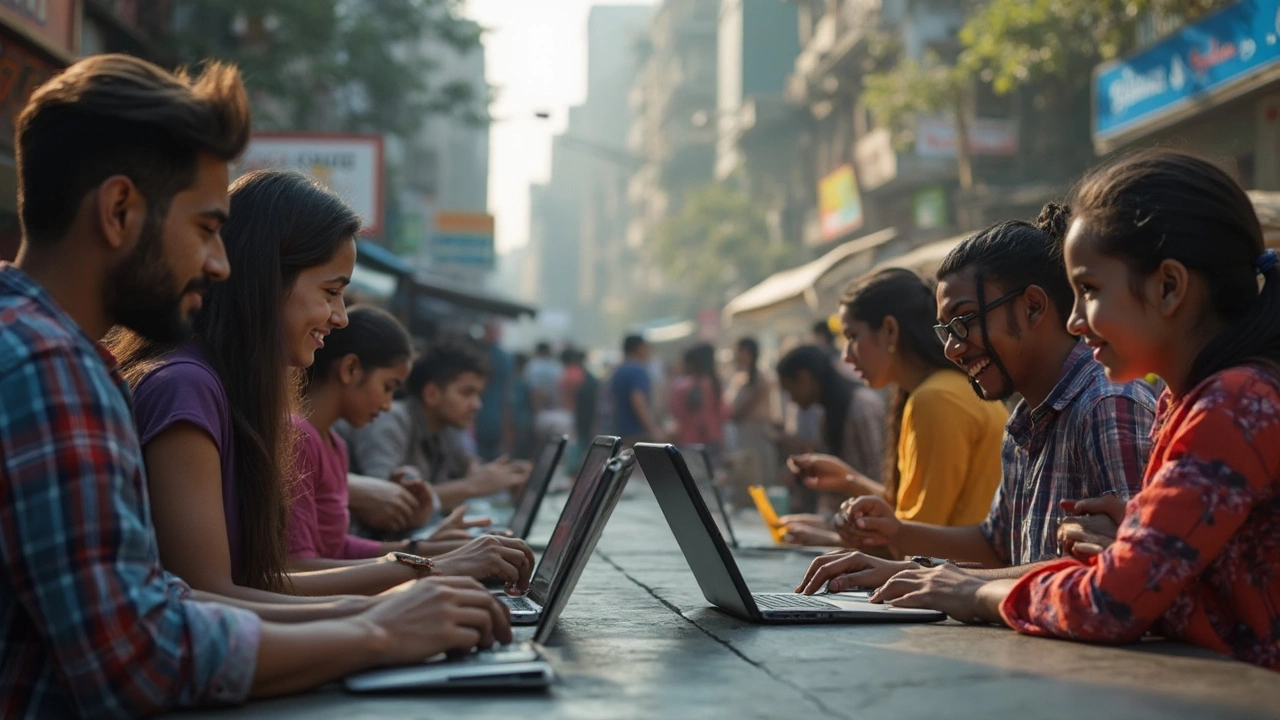Discover the Best Form of Community Outreach
 Mar, 10 2025
Mar, 10 2025
When it comes to community outreach, one size definitely doesn't fit all. Figuring out what works best for your community means really getting to know the people you're hoping to engage with. Are they tech-savvy, or do they prefer a good old-fashioned face-to-face chat? This understanding is crucial because it shapes how you reach out and connect.
It's also about balance. You might think of traditional methods like town hall meetings or flyers as outdated, but they can still pack a punch, especially when you're dealing with local communities that value personal interaction. On the flip side, incorporating digital tools like social media platforms or email newsletters can expand your reach and keep conversations flowing. Merging these approaches often hits the sweet spot.
- Understanding Your Audience
- Mixing Traditional and Digital Methods
- Building Authentic Relationships
- Measuring Impact and Adapting Strategies
Understanding Your Audience
So, you've got a community you want to reach, but who exactly are these folks? This is where the real detective work begins. Understanding your community is like opening a treasure chest of insights. It helps you tailor your outreach for maximum impact, and it all starts with gathering some basic intel.
Identify the Demographics
You can't guess who your audience is, you've got to know. Start with demographics: age, gender, education level, and employment status. These factors influence how people absorb information and interact with outreach initiatives.
Understand Their Interests and Needs
Once you’ve got the basic stats, dive deeper. What are the interests and issues that light a fire in your community? Is there a local cause they rally behind, or a service they desperately need? Surveys and social media can be goldmines for this data. Don’t just post questions; engage in conversations to get authentic feedback.
Communication Preferences
People have different preferences when it comes to how they like to be reached. Are they the type that checks every email, or do they live on Instagram? Do they prefer the personal touch of a phone call, or is a text message where it's at? Knowing this helps you choose the right channel for your effective outreach and makes sure your message isn’t lost in the sea of digital noise.
For a more visual breakdown, let's look at how these preferences might stack up:
| Communication Method | Preference Percentage |
|---|---|
| 46% | |
| Social Media | 35% |
| Phone | 12% |
| In-Person | 7% |
Analyze Past Engagement
Look at how your community has reacted to past outreach efforts. Did they respond better to certain campaigns or platforms? Analyze these patterns to avoid wasted effort and replicate successful strategies.
Figuring out who you're talking to is the first step in building a strong connection. The more you know about them, the better equipped you'll be to craft messages that resonate and create building connections that last. Remember, effective outreach isn't just about reaching out; it's about being heard and understood.
Mixing Traditional and Digital Methods
Combining both traditional and digital methods in community outreach offers the best of both worlds. It allows you to engage with different age groups and tech preferences, creating a broader and more effective strategy. By doing this, you're not only reaching more people, but you're also making your outreach efforts more inclusive.
Embracing the Old School
Let's not dismiss the power of traditional methods just yet. Hosting in-person events like community clean-ups or local fairs can create a sense of camaraderie and allow for direct interactions. Think of these gatherings as real-life social networks—they're powerful in building strong community bonds.
"Face-to-face interaction remains one of the most effective ways to build trust with your community," says Michelle Carter, Director of Community Engagement at United Neighbors.
Going Digital
On the digital side, tools such as social media and email campaigns can significantly extend your reach. Facebook groups, for instance, create a space for continuous dialogue and feedback. Meanwhile, newsletters can keep everyone in the loop without annoying them with constant updates.
Crafting a Hybrid Approach
Successful outreach isn't about choosing one over the other but rather finding the right mix. Start by:
- Understanding your community's needs and preferences.
- Using surveys to gather insights on communication preferences.
- Creating a calendar that balances both types of activities.
- Monitoring which efforts lead to the most engagement and adjusting accordingly.
Here's a quick glance at how a balanced approach looks:
| Method | Audience | Strength |
|---|---|---|
| Town Hall Meetings | All ages | Direct interaction and immediate feedback |
| Social Media | Younger demographics | Wide reach and continuous engagement |
| Newsletters | Adults | Information dissemination and regular updates |
Mixing these methods isn't only about innovation. It's about making sure you're making authentic connections in every possible way. In today's world, that's vital for any community outreach effort.

Building Authentic Relationships
At the heart of effective community outreach is building genuine connections with the people around you. It's not just about talking or sending messages; it's about fostering trust and understanding. This takes time, patience, and a little bit of soul.
Listen First
The best way to start is by listening. When you're reaching out, make sure you're actually hearing what the community has to say. Host open forums or feedback sessions. You'd be surprised at how keen people are to share their thoughts when they feel they're being truly heard.
Consistency Is Key
Another important aspect is showing up regularly. Don't just pop in once and disappear. Consistency shows commitment and reliability – two things essential for trust. Regular emails, bi-weekly meetings, or monthly events can help keep the momentum going.
Be Transparent
Keep things transparent. When you're upfront about your goals, struggles, and progress, people are more likely to trust you. Share stories of challenges and successes alike; it makes your efforts relatable and honest.
If you’re engaging with a local community, think about drawing up a plan for projects or initiatives they care about. Involving them directly in planning or execution empowers the community and creates shared ownership of the outcomes.
Utilize Local Champions
Work with local champions – people who are already trusted within the community. This could be a local pastor, a beloved teacher, or even the friendly store owner who's been there forever. They can provide invaluable insights and introductions, and their backing can help build credibility.
By focusing on these elements, you don't just engage your community; you empower them, turning outreach into a two-way street. That's what makes it effective outreach.
Measuring Impact and Adapting Strategies
Alright, so you've launched your community outreach campaign, but how do you know if it's actually working? This is where measuring impact comes in. You're going to want to keep your finger on the pulse of what's happening, and there's a few tried-and-true ways to do that.
Setting Clear Goals
First things first, set some clear goals at the start. Are you aiming for increased participation at community events, or maybe looking to boost social media engagement? Whatever it is, having something tangible helps measure success later on.
Collecting Data
Collecting data is your friend here. You don't need fancy tools. Start with simple surveys at events or polls on social media. Tracking metrics like attendance numbers and engagement rates can give you a good idea of how things are going.
- Surveys: Ask for feedback right after events. What did people like? What could improve?
- Social Media Metrics: Likes, shares, and comments can tell you a lot about digital engagement.
- In-Person Feedback: Sometimes, a genuine conversation can reveal insights you won't find in data.
Adapting Strategies
Once you've got some data, it's time to adapt. Maybe people loved the event but couldn't hear the speakers well. Or perhaps your audience prefers evening webinars over morning meetings. Use what you learn to tweak your approach. Flexibility is key!
Most importantly, always be ready to change things up. Communities aren't static, and neither should your strategies be. By continually measuring impact and adapting, you'll keep your outreach efforts fresh and effective, ensuring you truly engage and meet the needs of your community.